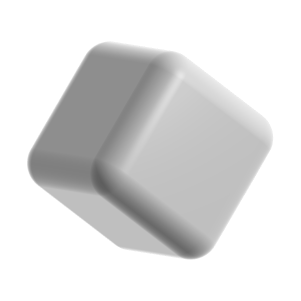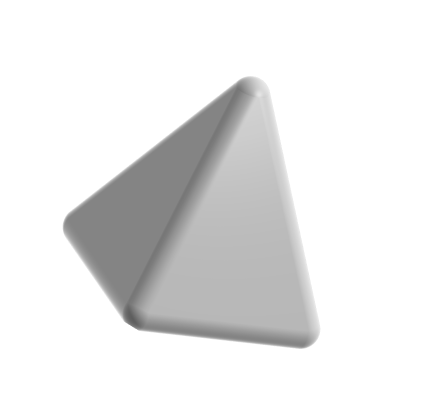The Beginnings of 3D Art: A Historical Perspective
The origins of 3D art can be traced back to the late 1960s and early 1970s, a period marked by the emergence of computer graphics as a revolutionary medium. During this time, pioneering artists and technologists laid the groundwork for what would become a vibrant and multifaceted discipline. One of the key milestones in the inception of 3D art was the development of raster graphics, which allowed for the representation of images using a grid of pixels. This innovation represented a significant shift from traditional drawing methods, enabling artists to explore new dimensions of creativity through digital means.
Among the early pioneers was Ivan Sutherland, whose seminal work, “Sketchpad,” introduced the concept of interactive computer graphics. This groundbreaking system allowed users to manipulate objects on a screen in real-time, laying the foundation for 3D modeling as we know it today. Furthermore, the introduction of software such as the Geometry Engine in the 1970s marked a significant development in the computational abilities required for 3D rendering. Artistic exploration began integrating more complex algorithms, which paved the way for many advancements in 3D art tools and techniques.
Another notable achievement during this era was the advent of the first animated films utilizing 3D graphics. Films like “Westworld” (1973) featured rudimentary 3D-rendered sequences, showcasing the potential of computer-generated imagery in storytelling. Additionally, video games began to incorporate 3D art elements, captivating audiences and demonstrating the commercial viability of the medium. As these foundational elements coalesced, they significantly influenced contemporary practices in 3D art, setting the stage for further technological advancements and artistic innovations in the ensuing decades. The nascent 3D art movement during this time was a critical cornerstone in the evolution of the digital arts, ushering in an era of unparalleled creativity and expression.
Technological Advancements: The Rise of 3D Software and Tools
The evolutionary trajectory of 3D art is intrinsically linked to significant technological advancements in software and hardware that have revolutionized the creative process. Early iterations of 3D modeling software, such as CAD systems, offered basic functionalities that paved the way for more complex applications. However, as technology progressed, so too did the capabilities of these platforms, leading to the development of powerful 3D modeling software like Blender, Maya, and ZBrush. These modern tools empower artists to create intricate models with unparalleled precision and detail, allowing for creative possibilities that were previously unimaginable.
Additionally, the introduction of real-time rendering engines, notably Unreal Engine and Unity, has transformed the landscape of 3D art. These platforms enable artists to visualize their creations in real-time, providing immediate feedback and enhancing the interactivity of 3D environments. With the ability to render complex scenes on-the-fly, developers can create immersive experiences that seamlessly blend artistry with gameplay mechanics. This shift has been instrumental in shaping industries such as gaming, film, and virtual reality, where realism and user engagement are paramount.
Moreover, hardware advancements, particularly in graphics processing units (GPUs), have significantly impacted the creation and consumption of 3D art. The surge in GPU power allows for more complex rendering processes and higher-quality graphics, enriching the overall aesthetic of 3D creations. Furthermore, the rise of virtual reality (VR) technology presents new horizons for artists and consumers alike. VR allows users to interact with 3D spaces in an immersive manner, creating a more profound sense of presence and engagement than traditional mediums. This confluence of software innovation and hardware enhancement continues to pave the way for the future of 3D art, driving the industry forward into new realms of creativity and exploration.
3D Art in Contemporary Culture: Trends and Influences
In recent years, the landscape of 3D art has significantly evolved, becoming a crucial component of contemporary culture. The integration of 3D art into various domains, such as film, gaming, advertising, and virtual reality, reflects broader cultural phenomena shaping societal perspectives and artistic expression. For instance, in the film industry, advancements in 3D technology have led to the creation of visually stunning animations and photorealistic special effects, enriching storytelling and viewer engagement. Productions like “Avatar” and the Marvel Cinematic Universe have set a high standard for immersive experiences, influencing audience expectations for upcoming releases.
The gaming sector also serves as a prominent platform for 3D art, with developers increasingly utilizing sophisticated graphics and realistic environments to enhance gameplay. Titles such as “The Last of Us Part II” and “Cyberpunk 2077” exemplify the commitment to detailed 3D artistry, allowing players to engage in richly crafted worlds. This trend not only illustrates the artistic capabilities of 3D tools but also emphasizes the role of players as active participants in a digitally rendered universe.
Furthermore, social media and digital platforms have revolutionized how 3D art is disseminated and appreciated. Artists can showcase their work to a global audience, gaining recognition and fostering communities around shared interests. Platforms like Instagram and ArtStation have become invaluable for emerging artists, facilitating networking opportunities and collaborative projects that were previously challenging to achieve.
The advent of emerging technologies, such as augmented reality (AR), artificial intelligence (AI), and 3D printing, is further propelling the evolution of 3D art. Artists now have access to innovative tools that expand creative possibilities, allowing them to explore new forms of expression. As AR and AI technologies mature, they present exciting potential for interactive installations and personalized artworks. Likewise, 3D printing empowers creators to transform digital designs into tangible objects, bridging the gap between virtual and physical realms.
The Future of 3D Art: Opportunities and Challenges
The future of 3D art is poised to undergo significant transformations driven by advancements in technology, access to tools, and the evolving needs of society. One of the most notable opportunities lies in the democratization of 3D art creation, facilitated by user-friendly software and educational resources. This development enables artists of all skill levels to explore their creative potential without the previously necessary barrier of complex technical knowledge. As software becomes increasingly accessible and affordable, a broader range of individuals can engage in 3D art, enriching the creative ecosystem and encouraging diverse artistic expressions.
Additionally, the fusion of digital technology with traditional artistic practices is likely to give rise to innovative forms of expression. Artists can experiment with augmented reality (AR) and virtual reality (VR), creating immersive experiences that challenge conventional boundaries. This new landscape provides opportunities for collaboration across disciplines, fostering a rich exchange of ideas that can propel the evolution of 3D art further.
However, with these opportunities come challenges that both emerging and established artists must confront. Ethical considerations surrounding copyright and intellectual property rights are increasingly relevant as 3D assets can be easily replicated and modified. Artists must navigate the complexities of protecting their work while simultaneously allowing for the collaborative spirit that digital art promotes. Furthermore, the rapid pace of technological change can overwhelm artists, necessitating continuous learning and adaptation to remain relevant in both artistic and commercial landscapes.
In conclusion, the future of 3D art holds immense potential for creativity and innovation. As artists embrace accessible tools and new technologies while addressing the associated challenges, they will undoubtedly play a crucial role in shaping the artistic narratives of tomorrow. The ongoing evolution of 3D art will not only reflect personal expression but also serve as a catalyst for broader cultural and technological advancements in the years to come.





